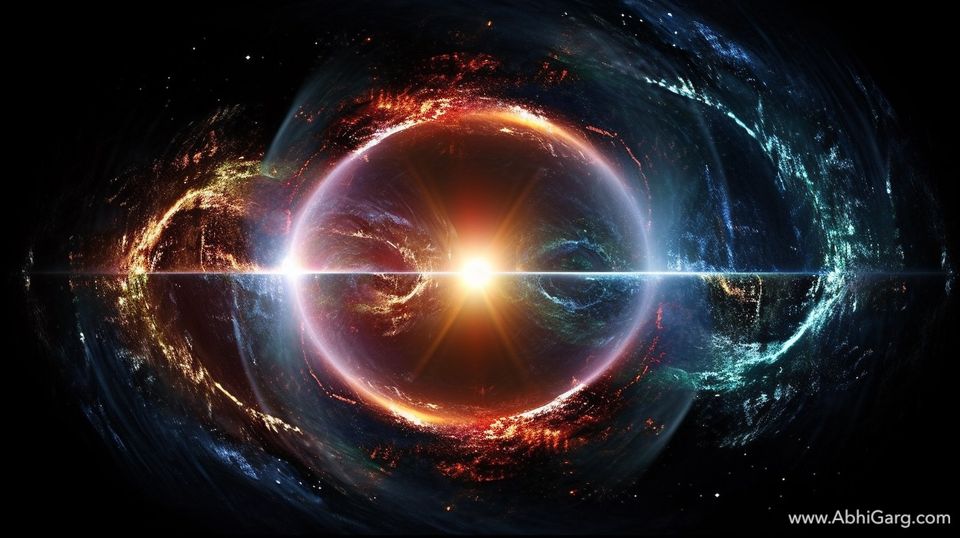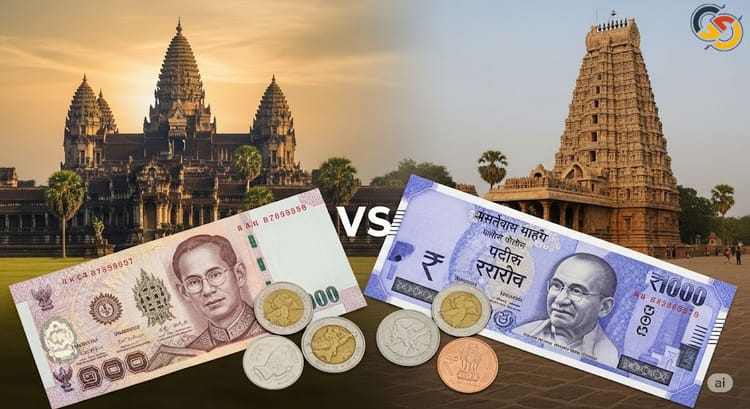Cosmic Inflation: Understanding the Universe's Explosive First Moment

The universe holds countless mysteries, but perhaps none are as profound as what happened during its very first moment of existence. At the heart of this cosmic puzzle lies a remarkable theory called cosmic inflation – a concept that has revolutionized our understanding of the universe's earliest beginnings. This comprehensive guide will explore the fascinating world of cosmic inflation, from its basic principles to its far-reaching implications for modern physics and cosmology.
The Birth of an Idea: Understanding Cosmic Inflation
When physicist Alan Guth first proposed the theory of cosmic inflation in 1980, it represented a radical new way of thinking about the universe's origins. While working on solving several puzzling aspects of the Big Bang theory, Guth conceived of a period of extraordinary expansion that would have occurred in the universe's first fraction of a second. This idea would become one of the most important developments in modern cosmology.
The Basic Concept: What Is Cosmic Inflation?
At its core, cosmic inflation proposes that the universe underwent exponential expansion approximately 10^-36 seconds after the Big Bang. During this brief but crucial moment, the universe expanded faster than the speed of light, growing from a size smaller than a proton to roughly the size of a grapefruit in just 10^-32 seconds. This mind-boggling growth rate means that any point in the observable universe expanded by a factor of at least 10^78 in volume.
Why Do We Need Cosmic Inflation?
The traditional Big Bang theory, while groundbreaking, left several crucial questions unanswered:
- The Horizon Problem: How could regions of space that were never in causal contact with each other have nearly identical properties?
- The Flatness Problem: Why is the universe's geometry so precisely flat?
- The Magnetic Monopole Problem: Why haven't we observed any magnetic monopoles, which should have been produced abundantly in the early universe?
Cosmic inflation provides elegant solutions to these fundamental puzzles, which is why it has gained widespread acceptance in the scientific community.
The Mechanics of Cosmic Inflation
The Inflaton Field
At the heart of cosmic inflation lies a hypothetical quantum field called the inflaton field. Much like the Higgs field, this field would have permeated all of space in the early universe. However, unlike the Higgs field, the inflaton field would have contained enormous energy density, creating negative pressure that drove the universe's exponential expansion.
The Physics Behind the Expansion
During inflation, space itself expanded at an exponential rate. This expansion was different from the regular expansion we observe today in several crucial ways:
- Speed: The expansion occurred at speeds far greater than the speed of light
- Scale: Every point in space expanded equally, creating a uniform expansion
- Duration: The process lasted for an incredibly brief period
- Energy: The expansion was driven by the enormous energy density of the inflaton field
The End of Inflation: Reheating
The end of the inflationary period, known as "reheating," was equally dramatic. As inflation ended, the energy stored in the inflaton field was converted into a hot soup of ordinary matter and radiation. This process effectively set the stage for the Big Bang's hot expansion phase, which we're more familiar with.

Evidence Supporting Cosmic Inflation
While we cannot directly observe the inflationary period, several lines of evidence strongly support the theory:
1. Cosmic Microwave Background Radiation
The Cosmic Microwave Background (CMB) radiation, often called the "afterglow" of the Big Bang, provides some of the strongest evidence for cosmic inflation. Key aspects include:
- Temperature Uniformity: The remarkably uniform temperature of the CMB across the sky (variations of only about 1 part in 100,000)
- Acoustic Oscillations: The pattern of temperature fluctuations matches predictions from inflationary models
- Scale Invariance: The distribution of hot and cold spots aligns with inflationary predictions
2. Large-Scale Structure
The distribution of galaxies and galaxy clusters throughout the universe matches what we would expect if cosmic inflation occurred:
- Uniformity at large scales
- Pattern of galaxy clustering
- Distribution of matter density fluctuations
3. Geometric Flatness
Measurements indicate that the universe's geometry is remarkably close to flat, which is a natural consequence of cosmic inflation.
Modern Developments and Ongoing Research
Current Areas of Investigation
Scientists continue to probe deeper into the nature of cosmic inflation through various research initiatives:
- Gravitational Waves: Researchers are searching for primordial gravitational waves that would have been generated during inflation
- Alternative Models: Various models of inflation are being developed and tested against observational data
- Quantum Origins: Scientists are investigating how quantum effects during inflation might have influenced the universe's large-scale structure
Technical Challenges and Limitations
Several technical challenges complicate our study of cosmic inflation:
- Energy Scales: The extremely high energies involved make direct experimentation impossible
- Observational Limits: We can only observe the aftermath of inflation, not the process itself
- Theoretical Complexities: Multiple competing models exist, making it difficult to determine which best describes reality
Implications for Our Understanding of the Universe
Multiverse Theory
One of the most intriguing implications of cosmic inflation is the possibility of a multiverse. According to this idea, our universe might be just one of many "bubble universes" created through eternal inflation. While this concept remains speculative, it emerges naturally from many inflationary models.
Quantum Fluctuations and Structure Formation
Inflation provides a mechanism for how quantum fluctuations in the early universe could have been stretched to cosmic scales, ultimately leading to the formation of galaxies and large-scale structures we observe today.

Future Prospects and Research Directions
Upcoming Observations and Experiments
Several major scientific initiatives are planned or underway to further our understanding of cosmic inflation:
- LiteBIRD Satellite Mission: Designed to measure CMB polarization with unprecedented precision
- Next-Generation Ground-Based Telescopes: Will provide improved measurements of large-scale structure
- Gravitational Wave Detectors: May detect primordial gravitational waves from the inflationary period

Theoretical Developments
Theoretical physicists continue to work on the following:
- Refining inflationary models
- Understanding the connection between inflation and quantum gravity
- Developing new mathematical frameworks for describing the inflationary period
Conclusion
Cosmic inflation represents one of the most significant theoretical advances in understanding the universe's origins. While many questions remain unanswered, the theory has provided crucial insights into the earliest moments of our universe's existence. As technology advances and new observations become possible, our understanding of cosmic inflation will evolve, potentially revealing even more profound insights about the nature of space, time, and the cosmos.
Frequently Asked Questions
- What exactly is cosmic inflation and when did it occur?
Cosmic inflation was a rapid exponential expansion approximately 10^-36 seconds after the Big Bang, lasting for about 10^-32 seconds. During this brief moment, the universe expanded faster than the speed of light. - How does cosmic inflation differ from regular universe expansion?
While regular expansion continues today at a much slower rate, cosmic inflation was an incredibly rapid, exponential expansion that occurred in the universe's first fraction of a second. It was driven by different physical mechanisms and expanded space at rates far exceeding the speed of light. - Why do scientists believe cosmic inflation happened?
Scientists find strong evidence for cosmic inflation in several observations, including the uniformity of the cosmic microwave background radiation, the flatness of space, and the pattern of galaxy distribution throughout the universe. - What caused cosmic inflation to start and stop?
Scientists believe an inflaton field drove inflation, but the exact mechanisms that triggered its start and stop remain active research areas. The process ended in a period called "reheating," when the energy of the inflaton field converted into matter and radiation. - Does cosmic inflation conflict with Einstein's theory of relativity?
No, cosmic inflation doesn't violate relativity because space expands faster than light, not objects moving through space. Einstein's speed limit applies to objects moving through space, not the expansion of space itself. - How does cosmic inflation solve the horizon problem?
The horizon problem questions how distant regions of the universe could have such similar properties without ever being in contact. Inflation solves this by suggesting these regions were in contact before inflation separated them at exponential rates. - What evidence are scientists still looking for to confirm cosmic inflation?
Scientists are particularly interested in finding primordial gravitational waves, which would provide direct evidence of the inflationary period. They're also looking for specific patterns in the cosmic microwave background radiation. - Could cosmic inflation lead to multiple universes?
Some cosmic inflation models suggest that the process continues eternally in some regions, potentially creating multiple "bubble universes." However, this remains a theoretical possibility without observational evidence. - What role did quantum mechanics play in cosmic inflation?
Quantum fluctuations during the inflationary period were stretched to cosmic scales, eventually leading to the formation of galaxies and large-scale structures we observe today. - How has our understanding of cosmic inflation changed since it was first proposed?
Since Alan Guth's original proposal in 1980, the theory has been refined and expanded through new theoretical work and observational evidence. Multiple inflation models have been developed, and our understanding continues to evolve with new data and research.






